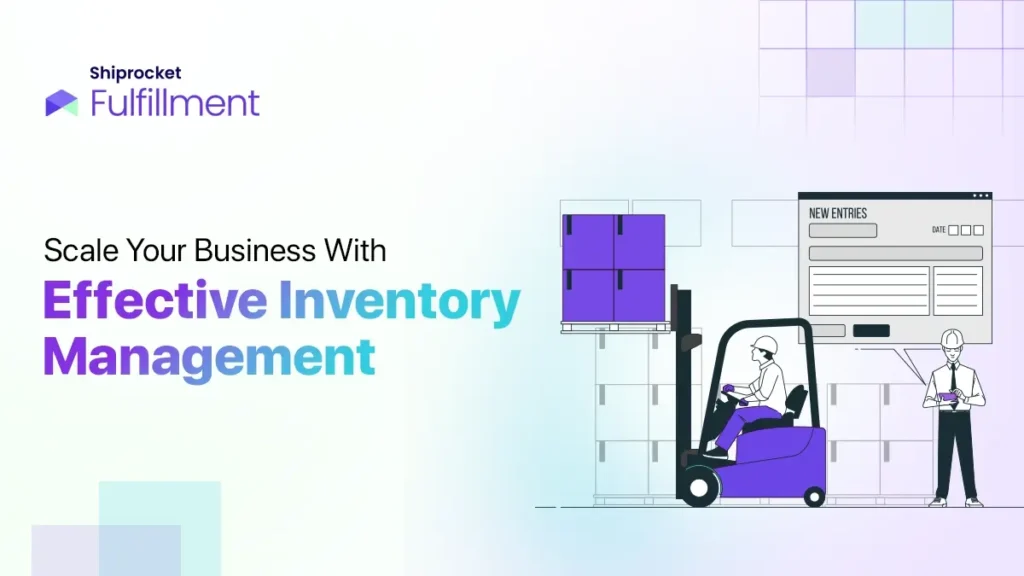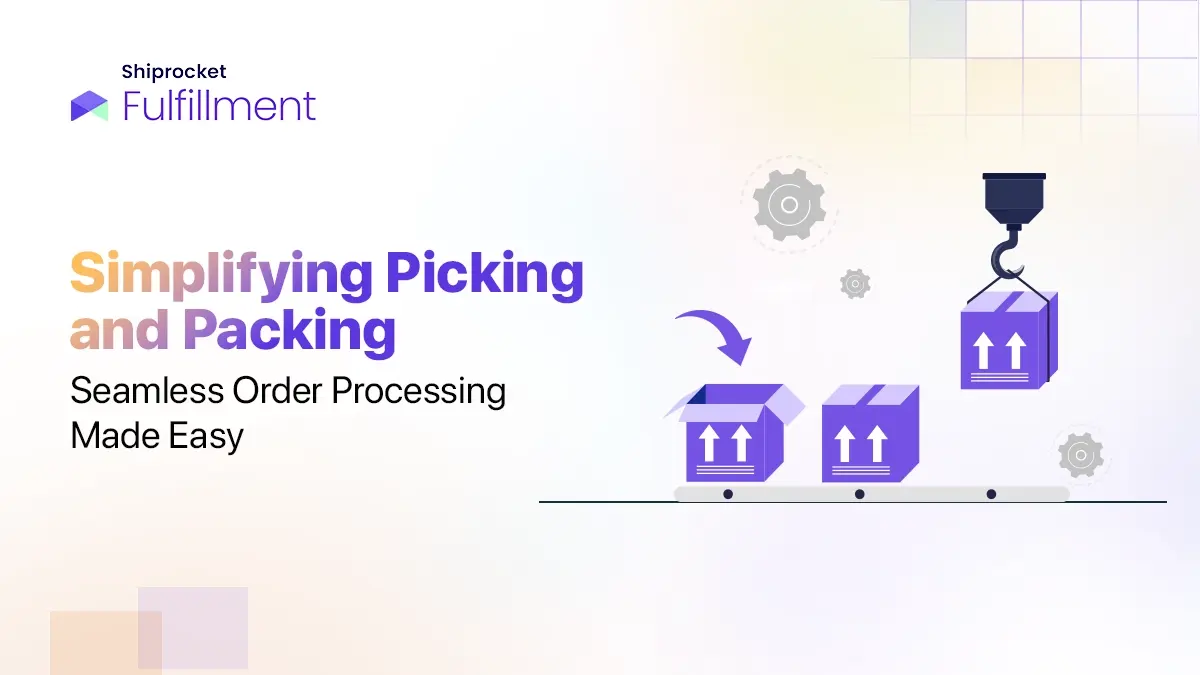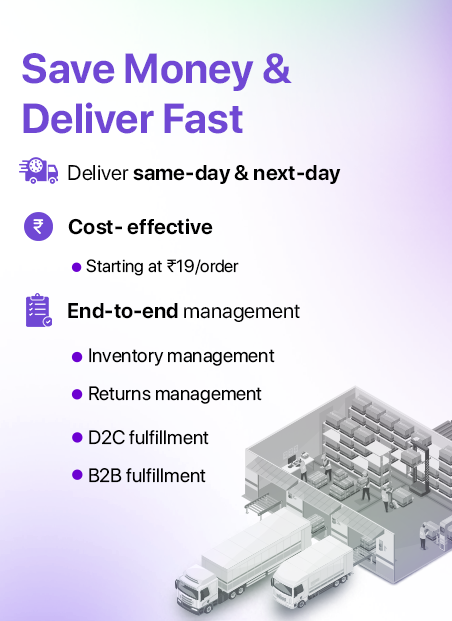Industrialisation goes hand-in-hand with modernisation. The increased pace of industrialisation has given rise to many difficulties in managing various industrial processes at different levels. The problem of inventory management is among the most significant ones. On the one hand, industrial operations are witnessing soaring input costs that constitute approximately 60% of the total cost. On the other hand, there are restrictions on increasing the market price of finished products due to the cut-throat competition around them. Consequently, industrial undertakings need to optimise their inventory management process.
Primarily, firms hold inventory for transaction purposes. A business needs sufficient stock to sustain a specific sales volume and maintain an adequate inventory of raw materials to ensure uninterrupted production. Moreover, the growing eCommerce and quick commerce culture demands large-scale inventory management. Inventory management plays a vital role in increasing sales channels and fulfillment options. It is also crucial for minimised input costs and improved earnings.

Inventory Management: Know the Process
“Inventory is like dairy products” is a quote by Tim Cook, Apple Inc.’s CEO, famous as an inventory genius. “No one wants to buy spoiled milk.” Therefore, inventory management can save a firm millions.
Inventory management, a significant part of the supply chain, is the process that helps track inventory from production facilities to warehouses and further to the point of sale. The process involves ordering, storing, utilising, and selling a firm’s inventory. It consists of the management of components, raw materials, and finished products, along with the processing and warehousing of the goods.
The inventory management process needs stock visibility, which includes knowing when to order in inventory to store and how much to order. A shortage of stock can lead to a loss of sales, while excessive warehouse inventory attracts additional charges and impacts the cash flow. A report from the Logistics Bureau reveals that inventory distortions, including shrinkage, stockouts, and overstocking cost businesses a whopping USD 1.1 trillion worldwide. Therefore, a company requires an accurate inventory management system to fulfill customer orders, prevent stockouts, overstocking, and markdowns and minimise shipment turnaround times.
How is Inventory Management Different From Inventory Control?
Inventory Control and Inventory management may sound similar, but they differ significantly.
Before zeroing in on inventory control, a business must implement a substantial inventory management process. This is because inventory control manages the inventory in its storage facility. With this process, a company can track which products are in stock and in what quantities. It is responsible for balancing the stock levels and preventing deadstock and stockouts. Besides that, the stock control system also helps predict future product demand. It keeps companies updated about the changing customer behaviour and helps stock up on products in demand beforehand.
Inventory management covers the entire stock-handling process. It manages everything from forecasting demand and ordering stock. Bringing the inventory management practice before inventory control allows a business to connect with suppliers and streamline fulfillment. It enables the company to establish inventory control and manage activities within the warehouse.
The Essential Stages in Inventory Management Process
Inventory refers to resources of any kind that hold an economic value. It comprises raw materials, work-in-progress, finished goods, stores, and consumables. Therefore, inventory management involves planning and devising techniques to maintain optimum stock. Let’s understand the stages of the process.
1. Planning Inventory and Forecasting Demand
In the first stage of inventory management, a business must research market trends and historical data to accurately predict consumer behaviour and demand for products at any given time. The forecast will help form a solid base for companies to make strategic decisions regarding stocking products. Taking such informed decisions further helps the firm manage stock levels and ensure timely order fulfillment to satisfy customer demands.
The precision in forecasting demand makes a lot of difference. It helps prevent overstocking and stockouts in the warehouse, saving and minimising costs. Piling up excessive stock holds up capital, and stockouts lead to customer dissatisfaction.
Therefore, a firm should use advanced forecasting and data analysing tools to improve its supply chain and enhance customer satisfaction.
2. Ordering and Purchasing Inventory
If a firm has determined the products in high demand among their customers, they must purchase and order them from their suppliers and manage the entire ordering process. A business must strengthen its ties and relationships with suppliers to build a reliable network and enhance the procurement process. You must take a strategic approach when choosing suppliers. According to a survey report from BCI, more than 20% of the participant organisations choose to opt sourcing from local suppliers post-pandemic to prevent potential shipping delays.
A business must also integrate teams across the firm to generate proper and accurate inventory records, besides making strategic alliances with suppliers. These records help the business in stocking and re-stocking inventory efficiently and cost-effectively. Additionally, the real-time inventory data also keeps the employees updated, and reduces the chances of human error.
3. Inspecting Inventory Upon Arrival
As you receive the purchased stock from the supplier, the next vital step is to inspect that inventory thoroughly. It is necessary to check if the goods are in good condition and free of any damage that may occur due to mishandling of the stock by the supplier.
You must ensure that the handling conditions are appropriate, like having protective packaging in place for fragile items. The regular inspection of inventory upon arrival can save potential losses.
4. Stacking and Packing Inventory
As the inspection of the received lot is complete, it’s time to push the products into a storage facility and arrange them strategically to optimise the inventory management process. Businesses may use different approaches to store their stock. They may choose a first-party vendor (1P), third-party seller (3P), or a hybrid seller model approach.
From receiving stock and storage to packing, a company manages all activities internally in a 1P model. It gives them direct control over quality standards and delivery schedules. In contrast, 3P centers are perfect for a business selling products through multiple channels. Their inventory goes to these 3P centres, and the third party is responsible for storing and packing the products before shipping. Adopting this model gives these firms greater flexibility but takes away some control.
On the other hand, the hybrid model is a combination of the 1P and 3P approach. Businesses with a hybrid model manage some products internally while outsourcing others to fulfillment centers. It helps them manage different product lines better.
5. Inventory Tracking and Control
The next crucial step in the process is to monitor the stock levels regularly in real time, track the transportation of goods, and identify any issues that may arise. Identifying problems beforehand can give firms the advantage to resolve them in time. A report from the Logistics Bureau reveals that 34% of businesses shipped an order late due to accidentally selling an out-of-stock product. Having a tab on the stock levels prevents problems like these.
Additionally, you can get accurate financial reports and optimise overall inventory management activities using robust mechanisms and techniques for inventory management. Besides that, you must also consider applying advanced tracking technologies and ensuring regular audits to protect and manage inventory. It will enhance your inventory management process.
6. Fulfilling Orders and Shipping
Order fulfillment is primarily crucial in the inventory management process because it’s the gateway to achieving customer satisfaction. A business must execute this step carefully to build a reliable logistics system and satisfy customers. This stage in the process encompasses all aspects from picking and packing orders to strategically deciding shipping methods.
A business must evaluate its logistics options carefully to fulfill orders efficiently and optimise the bottom line. For instance, small to medium-sized businesses find 3PLs the best as they offer cost-efficiency, flexibility, and customisation at a lower price. The 4PLs suit the more prominent companies because they provide a comprehensive view of supply chain management. It caters to the complex logistics system of more giant enterprises that need long-term optimisation.
How to Enhance Your Inventory Management?
The role of working capital is pivotal in the context of industrial development. The capital a firm raises is invested in fixed assets and current assets to conduct its business activities. The part invested in existing assets is working capital, and inventory is the most significant portion. Therefore, it’s essential to manage inventories efficiently. A well-optimised inventory management process positively impacts the financial aspect of a business, making the operations cost-effective.
Here’s how you can enhance your inventory management process:
Consistent Planning
You are managing and controlling inventory continuously throughout the business life cycle. Hence, you must monitor stock levels, track outcomes, and identify probable issues that may arise while maintaining inventory data extracted from watching inventory. You should update and plan further in your inventory management process.
Maintaining healthy stock levels and replenishing cycle lengths are crucial to inventory management. Besides that, observing changing patterns in the market, supply chain trends, and consumer behaviour aids in adjusting business plans accordingly. It gives you a competitive edge.
Strategically Organising Inventory in Warehouses
Organising products in the storage facility is essential to ensure proper inventory management. In this stage of the inventory management process, a business must focus on identifying critical stock and arranging products to make the process faster. For example, a company can organise its inventory by prioritising best sellers and products lined up for marketing campaigns. You can place these products at a short distance from the area in high demand. This method will save time and promote increased sales.
The need for such organisations comes from the fact that when stockouts recur frequently, businesses risk tarnishing their reputations and losing potential sales.
According to experts, the average stockout rate is nearly 8%. You can also consider using the ABC Analysis model to highlight the high-demand stock. Once you know that, you can choose the most suitable replenishment patterns to ensure these items are always in stock.
Build a Team
To optimise your inventory management process, you must have a team that can handle specific business areas with their expertise. Every aspect of inventory management needs close attention, and this process is collaborative. Thus, businesses must nurture reliable and solid relationships with their suppliers and production teams. It can help reduce costs and procure supplies.
Furthermore, integrating the staff across all phases of the inventory management process would help a great deal. For example, this integration can help fetch relevant data from the pickup agents to the warehouse managers and customer service team. Such integration of teams will help enhance your inventory management process.
Take the Right Approach
Another effective way to enhance your inventory management process is to match your approach with your business model. You must opt for a solution as per the specific needs of your business. These requirements may depend on the size of your business, its delivery method, and location.
Many factors, such as delivery networks, production facility locations, and warehouse locations can affect your inventory management process. A business must take these factors into account before selecting an inventory management software or tool. For example, you may be catering to domestic and international orders. Executing international deliveries would need a more extensive network than the local ones.
The warehouse locations need strategic planning as well. You must consider which product is in demand in which area and accordingly place the products in the nearest warehouse.
Choose An Efficient Software
Another way to optimise your inventory management process is to pick the most suitable inventory management software for your business. You must consider the capacity and ability of this software to accommodate the ever-changing market demands and the needs of your business. You must also ensure that the inventory management software integrates with all other systems, such as the accounting and CRM systems, and provides real-time inventory data to help make fruitful and timely decisions. The right software can help you save time in managing inventory and also enable faster inventory tracking with reduced human errors.
Inventory Management Software to Consider
It’s becoming increasingly challenging to compete globally without adopting strong inventory management tools. Today, the effectiveness of a business firmly depends on its ability to fulfill customer orders within a timeframe, to the right place, and in the correct quantity.
Therefore, the need to make quick inventory decisions is important all the more in the present scenario. An optimised inventory management process aids in lowering input costs, increasing revenues, and providing greater customer satisfaction. However, a firm may need an end-to-end solution like Shiprocket’s inventory management software to make this possible.
Shiprocket’s inventory management software gives you complete control over your inventory. It can track existing inventory systematically, which can help you manage your stocks well. The software also easily synchronises with your current systems, like the CRM, and others. You can also manage inventory across multiple channels without needing third-party software.
Learn more about the fascinating features of Shiprocket’s Inventory Management System.
Conclusion
Inventory management is a daunting problem in supply chain management. Firms need to have stock in warehouses to fulfill customer demand. Meanwhile, this inventory accumulates holding costs, and it’s frozen working capital at stake. Therefore, the job of inventory management is to find the amount of inventory that will fulfill the demand, avoiding overstock. It’s best to use inventory management to decrease stock levels and employ inventory management software to automate inventory management processes.
When a business expands, there is a subsequent increase in demand for products and overhead costs. The firm may face high costs relating to warehousing, including damaged items and replacements, quality control, and spoilage. There are a few ways to minimise these costs:
Avoid overstocking by investing in new products and opportunities for improvised sales.
Kick the dead stock out by returning obsolete inventories, selling it at a discounted price, or donating it to make more space in the warehouse.
You can reduce the supplier lead time between shipments, and bring down stock on hand further.
You can also reduce costs by opting for better inventory management software. It will help you centralise control over inventory and optimise the processes.





